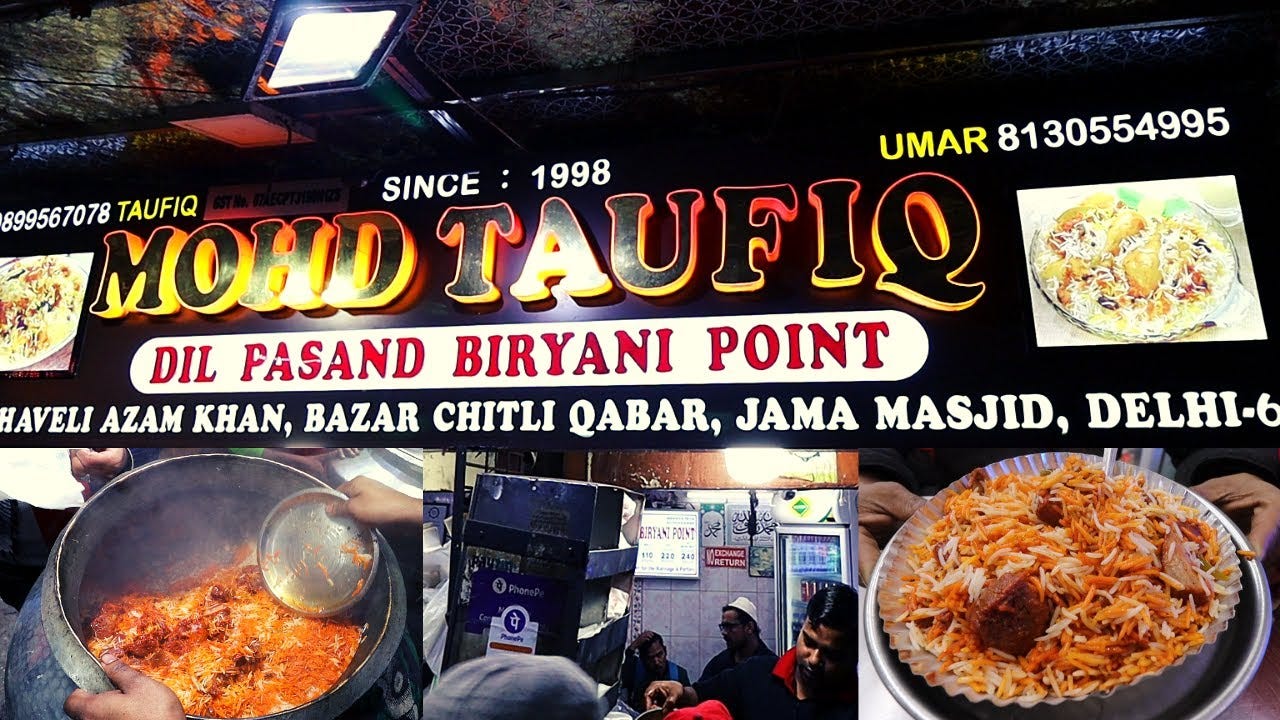The essence of Delhi biryani emanates from these hole-in-the-wall eateries of Old Delhi
What comes to mind when you first hear the name Delhi? Mughlai architecture, Mughlai cuisine, or something else? My vote goes to Mughlai cuisine, specifically biryani. Today, let's explore Delhi's biryani, which is authentic Delhi degi-style biryani. As the capital of India for hundreds of years, Delhi has become the cosmopolitan food hub of the country. Here, you can find famous biryani variants from different parts of India—whether it's Kolkata, Hyderabad, Lucknow, or Thalasseri, the biryani you crave can be found in Delhi. But what is Delhi's most authentic biryani, or at least, which biryani is cherished the most by the locals? That's what we're trying to find out today.
There is a historical tale, although its accuracy is uncertain. When the 5th Mughal Emperor Shahjahan shifted his capital to Delhi, his court doctors were not pleased with this decision. Delhi was not known for its hygiene; its polluted water and overcrowded conditions frequently made headlines. The doctors suggested that the food should be enriched with more spices, as it was believed that spices could help fight contaminants. The central Asian invaders who later became the rulers of India for a long time learned to add Indian spices to their food. Hence, the spicy and greasy Mughlai food that is so famous today came to be.
Nowadays, Delhi biryani may not be as phenomenal as Hyderabadi or Lucknowi biryani, but it is evident that Delhi biryani is the bare template from which these more famous variants have derived. In Old Delhi, near the Jama Mosque area, there are many hole-in-the-wall eateries that sell very tasteful and reasonably priced biryani. Whether they are descendants of old Delhi biryani chefs from the Mughal era or not, they are carrying the torch of tradition.
There is nothing fancy about these biryanis, but that doesn't impact their taste or appeal. People gather in bunches throughout the day to taste these biryanis. Mostly, two types of protein are used in these biryanis: chicken and buffalo meat. Cow meat is prohibited in most parts of India, but buffalo meat is allowed. Mutton is a pricey meat, so most restaurants don't serve this type of biryani. However, some well-to-do restaurants serve mutton biryani without explicitly advertising it as Delhi-style biryani.
The biryani-making process is almost like Lucknowi biryani—rice and meat are cooked separately. The meat is marinated with spices and yogurt before cooking. After the meat is cooked, rice is layered on top. Ghee and saffron are not common ingredients in these types of restaurants; instead, they use cooking oil and edible food color. As a result, the price is reasonable for their intended customer base. One unique thing about this biryani is that green chili pickle is added in the layers of rice and meat before putting it in Dum. Typically, long-grain rice called Sela basmati, which has an orange hue, is used.
There are many small eateries in this area that serve this biryani, but some restaurants should be mentioned for the quality of the craft they produce. Toufiq Dil Pasand Biryani, Abdul Matin Biryani Wale, also known as Mullaji's biryani, are among them. There are many more biryani shops in the surrounding areas. If you ever visit Delhi, I recommend exploring the Jama Mosque area. Alongside biryani, you will find other Mughlai cuisines that have been cherished by Delhi's people for generations.




